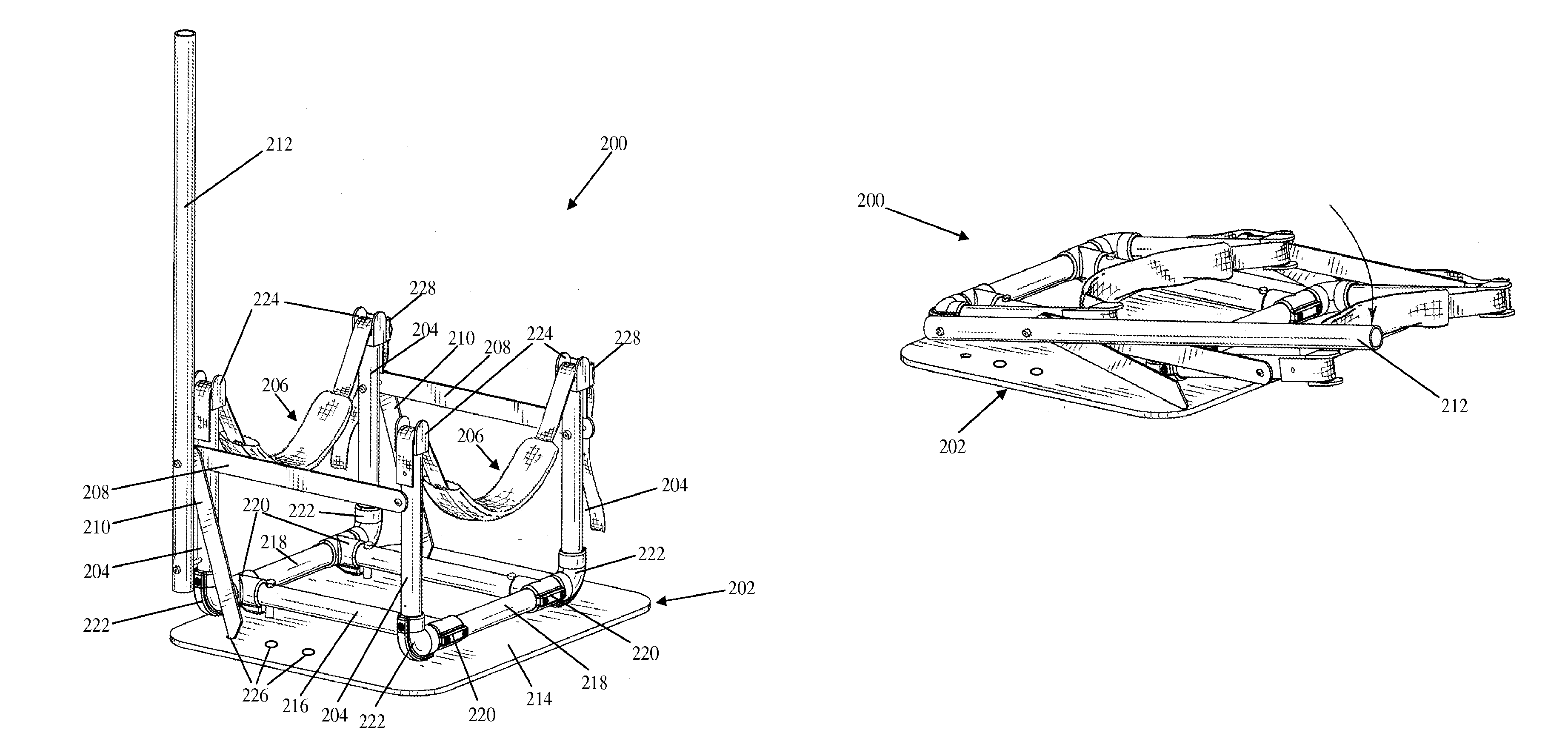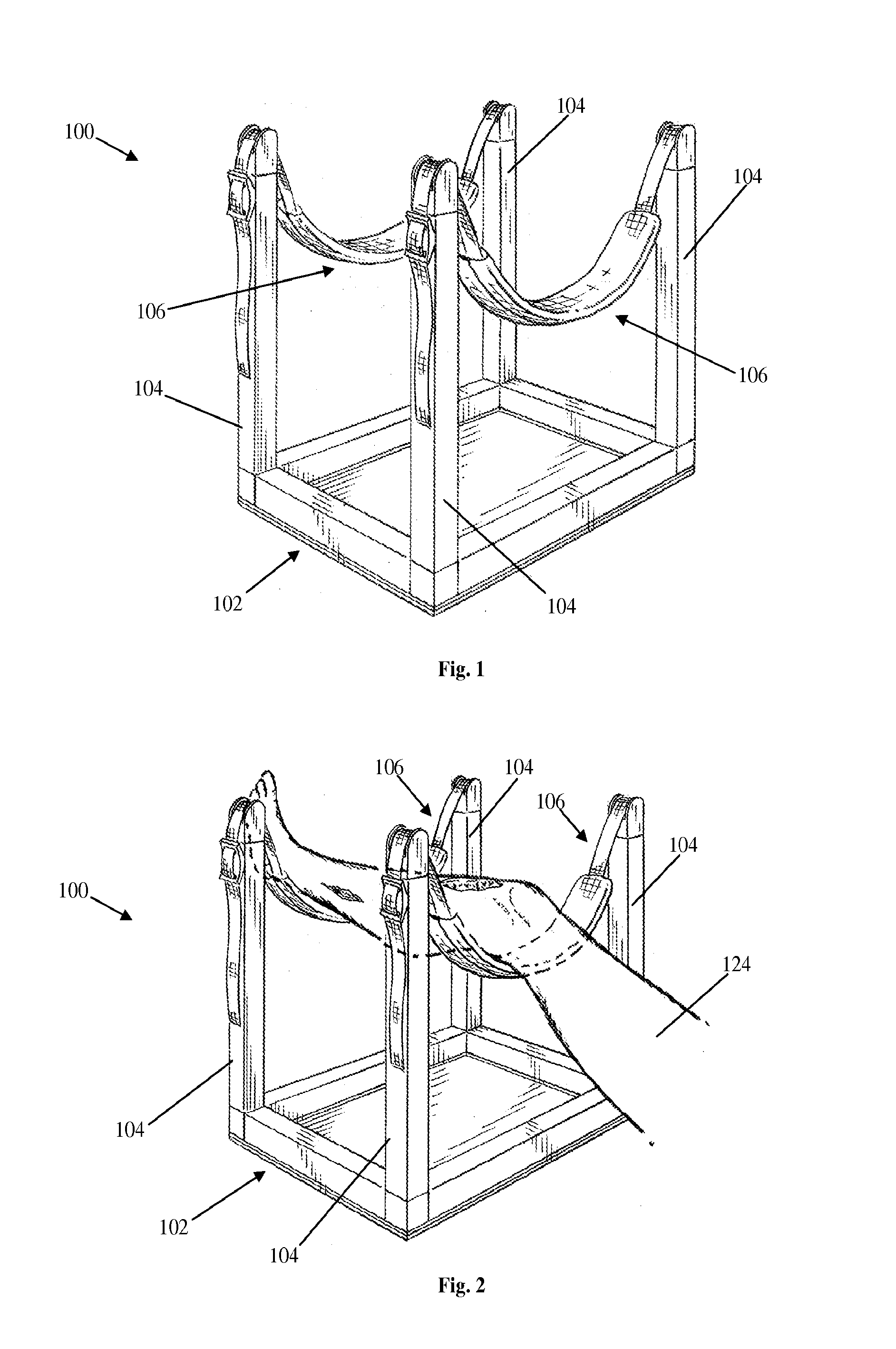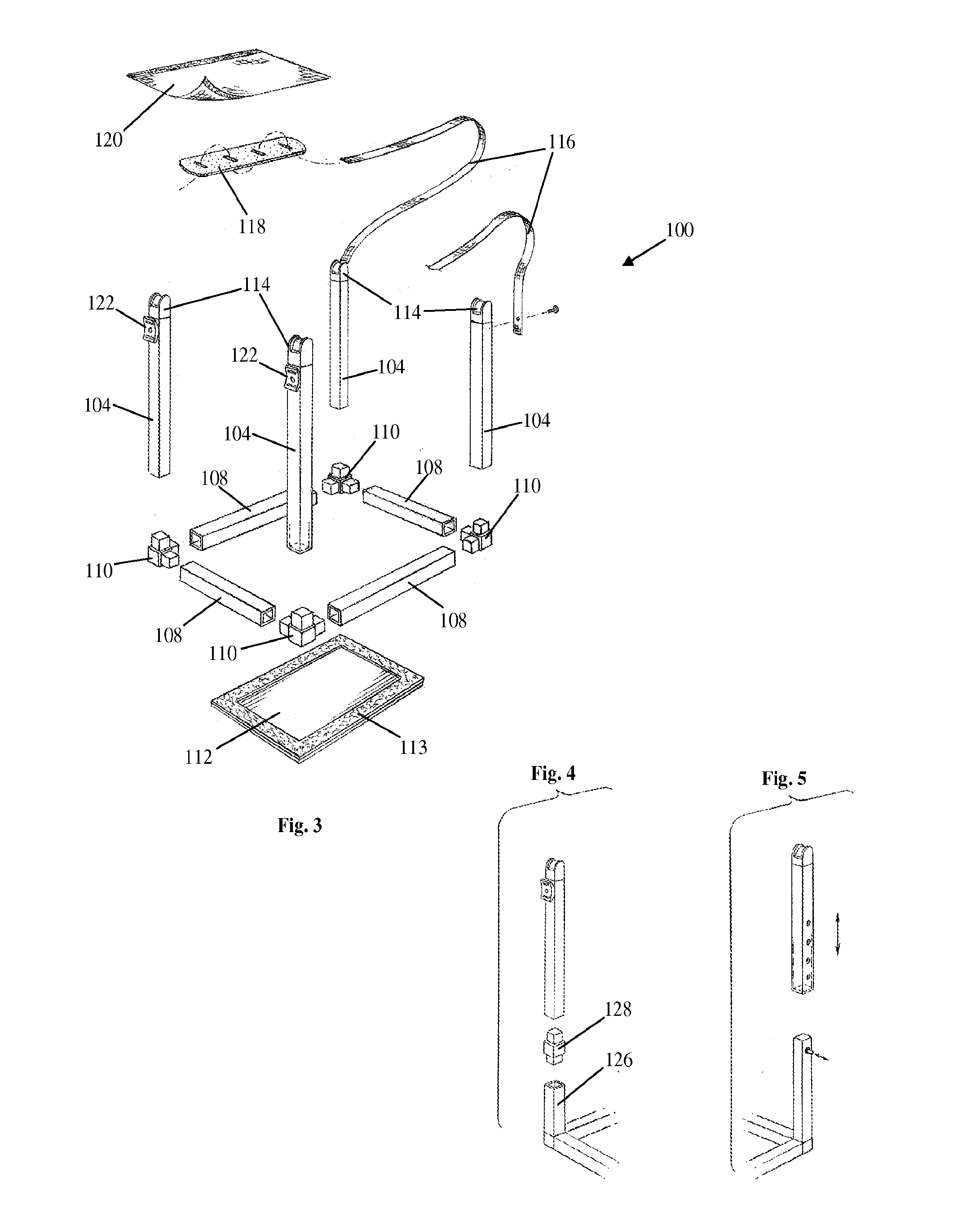Portable extremity assessment and management device
a management device and portable technology, applied in the field of portable extremity assessment and management devices, can solve the problems of caregivers being exposed to the risk of back or other injuries, further injury, and laborious in providing care in such a manner, and achieve the effects of convenient treatment and care of wounds, ulcers, and other conditions, and facilitating anesthesia
- Summary
- Abstract
- Description
- Claims
- Application Information
AI Technical Summary
Benefits of technology
Problems solved by technology
Method used
Image
Examples
Embodiment Construction
[0038]For the sake of convenience and clarity, terms such as “front,”“rear,”“top,”“bottom,”“up,”“down,”“inwardly,”“outwardly,”“lateral,” and “longitudinal” will be used herein to describe the relative placement and orientation of the various components of the invention, all with respect to the geometry and orientation of the first exemplary embodiment of the device as it appears in FIGS. 1 and 2, with the term “longitudinal” defined as the direction in which the leg shown in FIG. 2 is extending, and the term “lateral” defined as a direction perpendicular thereto. Said terminology will include the words specifically mentioned, derivatives thereof, and words of similar import.
[0039]Referring to FIGS. 1-3, a first exemplary embodiment of the inventive device, indicated generally at 100, is illustrated. Relative to other embodiments of the invention described herein (i.e., devices 200 and 300 described below), the device 100 is moderately portable, moderately durable, and is moderately ...
PUM
 Login to View More
Login to View More Abstract
Description
Claims
Application Information
 Login to View More
Login to View More - R&D
- Intellectual Property
- Life Sciences
- Materials
- Tech Scout
- Unparalleled Data Quality
- Higher Quality Content
- 60% Fewer Hallucinations
Browse by: Latest US Patents, China's latest patents, Technical Efficacy Thesaurus, Application Domain, Technology Topic, Popular Technical Reports.
© 2025 PatSnap. All rights reserved.Legal|Privacy policy|Modern Slavery Act Transparency Statement|Sitemap|About US| Contact US: help@patsnap.com



